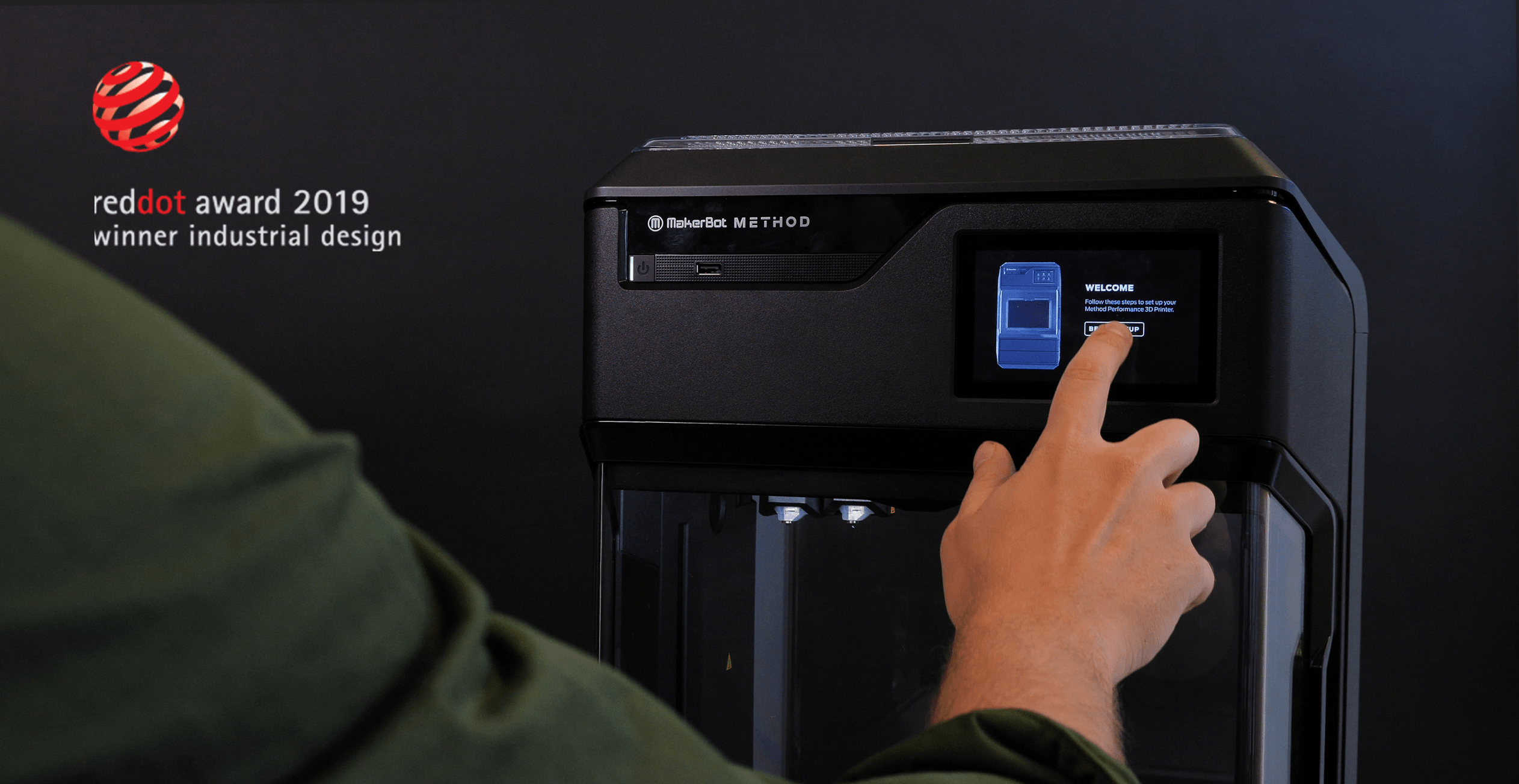First established more than 60 years ago, the international competition has a rigorous selection process. During an adjudication process that spans several days, the products are evaluated by judges of numerous different expertise and disciplines. The assessment focuses on criteria such as the level of innovation, functionality, formal quality, longevity and ergonomics.
Launched in December 2018, Method is the first performance 3D printer. Performance 3D printing bridges the gap between desktop and industrial 3D printing by bringing features that were previously only available on industrial 3D printers to professionals at a significantly lower cost. The printer’s industrial features control the 3D printing process to deliver a high level of precision, reliability and dimensional accuracy.
The Method industrial and UX design was led by Mark Palmer, Vishnu Anantha, and Andrew Askedall. “We wanted the design of Method to showcase the synergy between MakerBot’s heritage in desktop 3D printing, and the industrial 3D printers of our parent company Stratasys. MakerBot printers have always been very open and engaging, putting the focus on the print and encouraging users to keep the printer in their workspaces,” explains Anantha. “Simultaneously, we wanted to evolve the hardware to ensure it looked sleek and futuristic, reflective of the new technology within.”
“We’re thrilled to receive such a prestigious and exciting industry award for Method,” concludes Nadav Goshen, CEO, MakerBot. “Making industrial 3D printing accessible requires affordability and a seamless user experience. Method was developed by a small, focused design team, who thought systemically about the entire 3D process, from the pixels, all the way to the plastic. Having design control of the interplay between hardware and software enables us to provide an ease-of-use experience second to none in the space. This is the beginning of an exciting journey for performance 3D printing.”






















